Blog •
Posted on Oct 05, 2023
Workshop — Be the Boss of Your Own Time: Achieve Your Ideal Freelance Lifestyle
About the author
Reedsy's editorial team is a diverse group of industry experts devoted to helping authors write and publish beautiful books.
More about the Reedsy Editorial Team →This is the transcript from our workshop on time management on September 26th, 2023, led by Sarah Duran: a professional coach, project manager, a business strategist who works with freelancers to develop structures and frameworks that help them get the most out of their time and effort. She's the founder of Fruition Initiatives and the author of Instant Freelancer: How to Start a Business of One.
This transcript has been edited for length and clarity.
Skip to 6:20 for the start of the workshop.
Sarah: To start this workshop off, I want to double down on one key fact about who I am: I am not a business guru who tells people how to do things in theory. Everything that I'm going to talk to you about today are things that I put into practice every day when I work with my own clients.
I spend about 70% of my time being a freelance project manager. I've been doing that for almost a decade, working directly with all different kinds of clients to manage high-level projects. The other 30% of my time I spend working with other freelancers, writing, coaching, and creating content to help other people get the most out of solopreneurship.
All that is to say that I am in the trenches just like you, using all of the strategies that I'm about to share with you in this workshop.
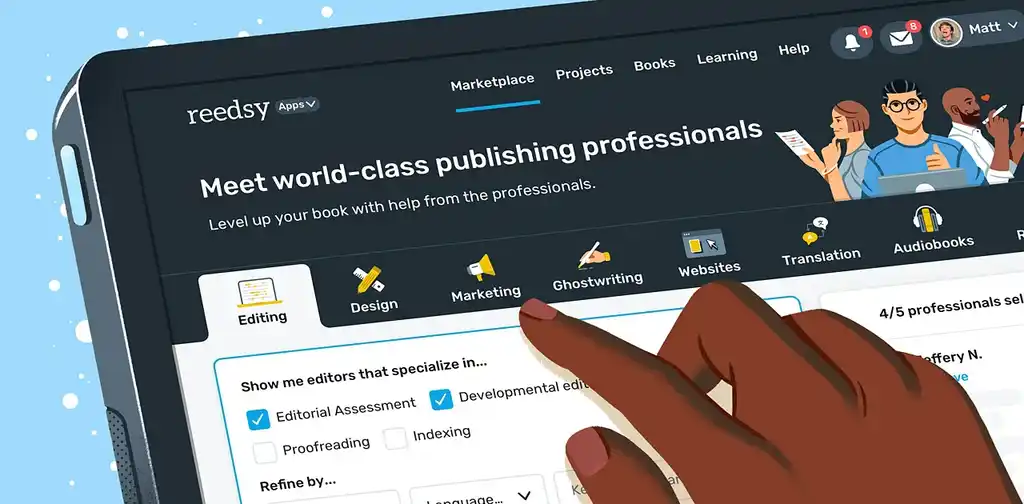
FIND CLIENTS
Grow your business on Reedsy
Submit your application to join our curated network and connect with clients.
Understanding your unique needs
Today we'll go through a process of truly understanding how we spend our time so that we can prioritize what matters and make sure that our time is structured in order to achieve it.
Q: How do you stay productive as a freelancer?
Suggested answer
Staying productive requires having high standards -- that means providing excellent services combined with many years of experience, skills, and a passion for children's books, in my case. When you do great work with a great attitude, clients will find you. There's nothing more important to staying productive than doing stellar, quality work that you can be proud of and that authors appreciate and love.
Tara is available to hire on Reedsy ⏺
My productivity strategy stems from my experience juggling multiple roles as an illustrator, cover designer, and author. I maintain a structured daily schedule that allocates specific time blocks for different types of creative work – whether it's developing initial concepts, working on detailed illustrations, or handling revisions. This approach helps me maintain consistent creative energy throughout the day.
I use a combination of digital tools to track projects and deadlines, ensuring nothing falls through the cracks. Having published five books myself, I understand the importance of meeting publishing deadlines, so I build buffer time into each project timeline. This includes accounting for my two-revision policy and ensuring each phase of work receives proper attention.
The key to sustained productivity is maintaining a balance between creative work and administrative tasks. I dedicate specific times for client communication, portfolio updates, and business development, which helps preserve longer periods of uninterrupted creative focus for illustration and design work.
Sergey is available to hire on Reedsy ⏺
Freelancing gives us freedom, but without structure, productivity can suffer.
Here are four strategies to stay on track:
Set fixed working hours – Flexibility is great, but having a consistent schedule helps build habits, maintain focus, and avoid unnecessarily long workdays.
Plan before you start – Assess each project in advance to create a realistic timeline with daily and weekly goals, leaving room for unexpected delays.
Break your day into milestones – Setting short-term targets (e.g., “Finish this by 11 AM” or “Review that in the afternoon”) helps measure progress and stay motivated.
Use project management tools – Apps like Trello, Asana, or Notion can help you organise tasks, track deadlines, and stay efficient.
I hope this helps!
Inma is available to hire on Reedsy ⏺
The way that you structure your time needs to be unique to you and your needs. What works for me may not work for you, so I'm not giving you a standard list of best practices; what I’m giving you is a structure for understanding yourself and how you want to be spending your time in order to then build the structures that reflect that.
Here’s a link to the workbook that you can use to work through some of the material we’ll cover. You can keep the workbook and refer to this video to go back and dig deeper on your own as you go.
Reflecting on currently time usage
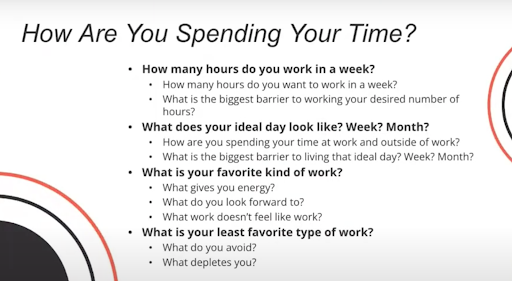
The first question to reflect on is what you want your time to look like. Embedded with that is a set of questions about what’s stopping you. These are the types of questions which help you get down to what type of work you love doing and what you want to change.
Time analysis
The next tab in your workbook is a time analysis to assess the different tasks that you have to tackle on a daily, weekly, or monthly basis. This is something that I highly recommend you go back to spend more time on after the workshop.
💡Top tip: Set aside some time to reflect and fill out this sheet in a calm atmosphere to get the most out of the exercise.
Life
The first group of tasks to reflect on fall under the “life” category because our businesses should serve our lives, not the other way around. Focusing on the ways that you're spending your time in your life first is really important when you're thinking about all of the ways that you're structuring your time across your business. They should be mutually beneficial.

Billable work
The second group of categories is your billable work: work that you can directly charge clients for. The tasks that I've identified here are just examples and might be different depending on what type of business you’re running.

Saying that, in the exercise that we already did some of these categories cropped up. Research, for instance, would fall under information gathering, and interacting with clients might fall under managing or facilitating.

FREE RESOURCE
Invoice Template
Provide billing and payment details with this professional template.
Non-billable work
The next group to consider is the work that you can’t directly charge your clients for, but that you need to do to make sure that your business is running and thriving, such as marketing yourself, finding new clients, and building new skills.

Remember: no matter what section of the analysis tool that you're in, you can edit and tweak the categories to make them work for you. At Reedsy, this might include things like responding to client requests, optimizing your profile to attract the right clients, and participating in webinars..
Measuring time
Now, let's talk about revenue, significance, preference, and skill level. These are the criteria by which we’re going to analyze if we’re spending our time on the right things.
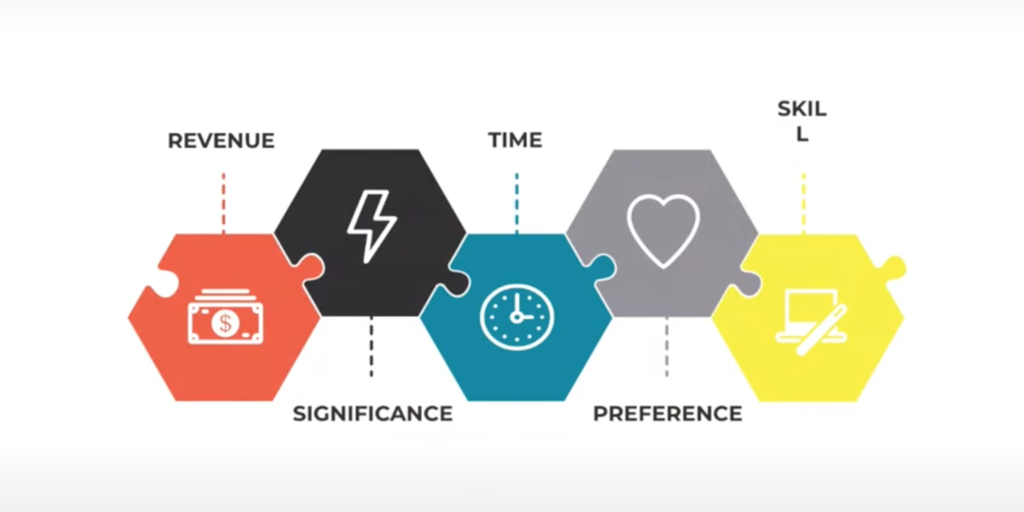
These criteria all interact with each other. You are never going to decide to change something about the way you spend your time based on one of these alone. Let’s take a closer look.
Revenue
Revenue is thinking about time versus money. Ideally, we want to focus as much of our time and effort on clients and projects that are high money and low time.
Q: How do you estimate how long a project will take?
Suggested answer
This is something I'm still learning, even after five years as a freelance editor!
I look closely at the sample to gauge how much intervention the text will need in terms of both writing and formatting – even if the writing is very polished, it can take several hours to code the manuscript at the end of the project, or even just to add the Word styles that will help me to navigate it as I work. I'll then look at the word count to get an idea of how many hours it will take.
I factor in additional time to correspond with the author, create the style sheet, and perform the final checks before I send the manuscript back. Another huge consideration for me as a non-fiction editor is the footnotes. I've learned always to factor in additional time for updating the referencing style, proofreading the contents, and checking the numbering, as it always takes longer than you might think.
Mairi is available to hire on Reedsy ⏺
As a book interior designer and typesetter, I estimate project timelines based on both the length and complexity of the manuscript as well as my experience from past collaborations. A straightforward novel with few special elements can usually be completed more quickly, while a non-fiction book with multiple sections, tables, or other design requirements naturally takes longer. Over time, I’ve found that setting realistic timelines right from the start is the best way to ensure smooth projects.
Once I’ve received all the materials and the necessary information from the author, creating a first draft usually takes around one to three days. This draft typically includes the front matter and the first chapter, so the author can get a realistic first impression of how the book will look and we can make sure we’re aligned before moving on.
From there, the overall timeline depends a lot on communication. Finishing a project completely usually takes between two to four weeks, depending on how quickly I receive feedback, answers to any open questions, or additional materials. For new clients, I generally recommend allowing up to four weeks, just to give us both enough breathing room. Every collaboration is slightly different, and through experience, I’ve learned that it’s always better to plan generously rather than rush through the process. That way, the project can move forward smoothly, without unnecessary stress on either side, and the final result has the polish and attention to detail it deserves.
Sabrina is available to hire on Reedsy ⏺
Experience is the key factor I use to determine how long a project will take. I have worked on hundreds of book projects and maintain detailed timesheets for each one. While every project is unique, whether I'm illustrating a picture book or designing a cover, I can refer back to similar projects to make a fairly accurate estimate. This approach may not be helpful for someone just starting out, but as you complete each new project, you will begin to develop your own sense of timing. When I first began, I made mistakes, and some projects resulted in minimal profit.
Vaughan is available to hire on Reedsy ⏺
An additional thing that I often ask people to reflect on is how much money they actually need. Chasing money encourages a feast/famine mentality that all freelancers fall into at some point, so being clear on what income you need and making sure that you have a budget to see what it looks like long term can be helpful strategies to tackle that.
Significance
Significance is a bit subjective, but ties into the business model: are you spending your time on activities that are crucial to you?
You may have some flexibility to focus on non-crucial work and still accomplish what you need to get done, but if you're a marketing strategist, for instance, you might be wasting time on planning and responding to emails rather than marketing strategy.
On the other hand, let's say you're a virtual assistant. Responding and planning are going to be crucial components of what you do. If it turns out you don't actually like those things, that presents a bigger conversation that you need to have with yourself about your business. Which leads me to preference.
Preference & Skill
Are you doing what you love and are you doing what you're good at? Just like all of these other criteria, you're never going to add something or eliminate something just because you're not good at it, or just because it doesn't make you happy.
I personally always weigh preference first. It's one of my top criteria, but skill is another one. Sometimes we take for granted that we can be really good at something we hate doing. There are lots of things that I'm good at that I don't love. So how do I think about structuring my business model so that I'm focusing as much time as possible on things that make me happy?
As a sidenote, if we decide to shift towards doing more of the things we love, we can sometimes see our revenue shift. That doesn’t have to be a permanent change. It's about continuing to adjust. A lot of times when you start to focus on things that you love, your clients can see that reflected in the way that you interact with them and in the results that you produce.
How do you handle creative elements in terms of time? If you’re really drawn to a certain project, do you still limit it to the same time as other projects?
If you’re working on something that you love, you sometimes have to put time boundaries around it so that it’s not taking up all of your mental energy or making you miss deadlines for things that you maybe don't love as much but that are important to get done. If you find yourself so drawn to a project that you’re neglecting other tasks or that there's a piece of your business that you feel truly passionate about, that might be a signal for you to shift your business model so that you're doing that as much as possible.
Sometimes we also have more open-ended projects that don't have deadlines or time boundaries. For those things, I recommend putting them on your calendar as regular intervals so that they don’t end up getting indefinitely postponed.
For example, you have a side-project that you're working on that doesn't have deadlines, but you want to make sure you're getting it done. Block out designated time on your calendar — perhaps 2 hours per week. That way, you make sure you get to it while still putting a boundary so it doesn’t eat up too much time.
Can you speak a little bit about creating stability in freelance work?
Finding stability as a freelancer will look different for each person.
Firstly, you need to make sure that you're super clear about yourself and the work you’re doing. Once you have that clarity, you can start to find balance and stability, working with the right kind of clients for you.
Secondly, make personal connections with potential clients. I'm a big believer in old school networking and having one-on-one conversations with actual humans, as well as building relationships with other professionals.
I think organizations like Reedsy are a great example of that. Building relationships with people who already serve and attract your ideal clients who can make recommendations and referrals is super important and will get you a lot further than most one-on-one relationships. And when you're good at what you do, you're going to need other people to support you in that effort.
Finding the right strategy for change
As mentioned, you're going to want to weigh various criteria to decide what you want to change about how you spend your time. Focus on things that are low revenue, that aren't significant, that you don’t like doing, that you aren't good at, and that take too much time.
The next step is figuring out how to change it. Sometimes we're really good at saying “I need to change this thing” and then we're not as good at deciding what we're going to do about it.
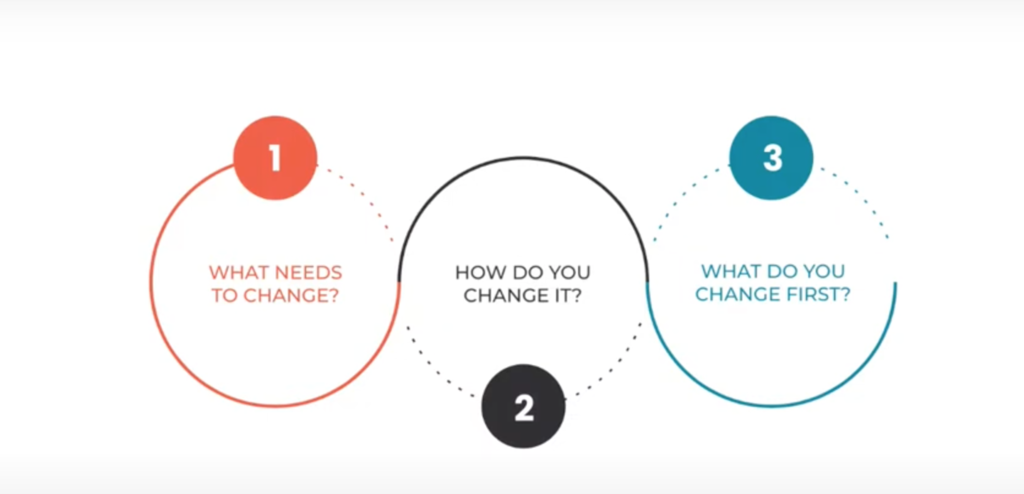
Here are four simple strategies for change that you can implement:
Letting go
Can you restructure your time or your business model so that you can do less of it?
For example, you start your business and everyone says: “You have to have a website.” So you spend a ton of time creating this website, but no one's really looking at it. All your incoming work is through repeat business and referrals. This would be a good example of something to “let go” of. Maybe you decide that you’ll just have a super basic website so that you don't spend all of your time on keeping it updated.
Letting it go is great for things that are low revenue, not crucial, you don't love, and you're not good at.
Limiting
Placing limits around those things that you have to do, but that are taking over your time can be helpful. Maybe you can decide to check your email three times a day for 30 minutes. You have those 30 minute blocks on your calendar. At all other times during the day, your email is turned off.
Limiting it is good for things that are low revenue, that you don’t love, and that are taking up too much time but are still important to your work.
Structuring
Let's say it’s taking you too long to research projects and create a proposal for clients. It's crucial to your business, but you’d like to spend less time on it.
Can you create an intake form so you’re getting all the information you need and plug it into a proposal template? This would be an example of a structure that helps you manage your time better.
I am a project manager by trade, so I’m a big believer in structure. Structure can be good for literally anything on your list that you need to change.

FREE RESOURCE
Quote Template for Editors
Lay out your rates, deliverables, and timeline with a professional template.
Outsourcing
Can someone else do it better, faster, or cheaper?
When I first started doing content creation and selling courses and running workshops. I decided to DIY some Facebook ads. It seemed like too much for me to hire someone else to do it. Turns out that Facebook ads require a very high level of expertise. By doing it myself, I wasted a bunch of time and money. If I’d hired an expert, I would have saved time and would have gotten better results.
Outsourcing it is good for pretty much everything. Things that are low revenue, important or peripheral to your work that you don't love, that take too much time, and that you're not good at.
How do you know if someone else can do it cheaper?
Sometimes we get lured into thinking that our time is free. It is not free.
When I first started my business I created a simple logo but as my business grew, I realized that I needed to put forward a more professional appearance. So I spent a lot of time trying to create a better logo. But, I'm not a designer and it still looked pretty bad.
When you’re asking yourself whether you should outsource, you're not just thinking about if it's cheaper, but if it's better. Сreating a really crappy logo took me four hours — hours I could have spent doing billable work — versus paying someone to create a really amazing logo in maybe 20 minutes.
Q: What tasks do you delegate to make more efficient use of your time?
Suggested answer
I use a tax accountant to help with that side of things. It saves me time, and I don't worry about whether I've made a mistake or missed something in that regard. I keep track of all my business finances via accounting software, and then I can just hand it all over at tax time.
I also paid someone to set up my website as it would have taken me so very long to get around to it and I wasn't confident in my ability to make it attractive and useful. I think it was money very well spent and I still consult the designer at times to make changes or help me with aspects of digital communication and marketing.
Lauren is available to hire on Reedsy ⏺
To maintain focus on core creative work – illustration and design – I delegate several supporting tasks that could otherwise fragment my attention. I work with a virtual assistant who handles initial email responses, schedules client meetings, and manages basic administrative tasks, allowing me to concentrate on delivering high-quality artistic work.
For technical aspects of file preparation and format conversion, I use specialized automation tools while maintaining personal oversight of quality control. This approach combines efficiency with the attention to detail that professional publishing requires. Having experience as both an illustrator and author helps me identify which tasks truly need my personal attention and which can be handled through other means.
However, I never delegate client communication during the creative process or revision stages. My two-revision policy is built on direct interaction with authors, ensuring clear understanding and efficient progression toward their vision.
Sergey is available to hire on Reedsy ⏺
Making time for deep focus
One of the things that is normalized in work today is multitasking. A lot of times it feels like it's the only way to get things done because we have such limited time available. This is a problem because our brains can only focus on one thing, so when we're multitasking, we're just switching back and forth between two tasks.
Q: How do you ensure that you make time for deep focus while managing multiple clients?
Suggested answer
Creating quality illustrations and book covers requires periods of deep, uninterrupted focus. I structure my workday around "focus blocks" – dedicated time periods where I work exclusively on creative tasks without interruption. During these blocks, I turn off notifications and fully immerse myself in the artistic process, whether it's developing initial concepts or refining illustrations.
My experience as an author has taught me the value of creative momentum, so I schedule client communications and administrative tasks around these focus periods rather than fragmenting my creative time. I communicate this schedule to clients upfront, setting clear expectations about response times while ensuring they know their projects receive my full attention during dedicated work sessions.
I also maintain a project calendar that prevents overcommitment, ensuring each book receives the focused attention it deserves, particularly during the critical initial design phase and revision periods. This systematic approach helps me deliver consistent quality while maintaining creative energy across multiple projects.
Sergey is available to hire on Reedsy ⏺
I find it very challenging to work on multiple books at once as the authors' styles can vary so subtly. Wherever possible, I prefer to work on one project at a time (or at least schedule projects with very different services or subjects).
I also schedule my editing blocks for the times when I know that I can concentrate most effectively – for me that's usually in the morning and the late afternoon. I'll check any messages that came in overnight before I start work, and then respond to any new messages or admin jobs in the middle of the day and in the early evening. This means I get high-quality editing done efficiently, while staying on top of all my other tasks.
Mairi is available to hire on Reedsy ⏺
As an editor of novels I tend to work on one book at a time to avoid confusion and a splitting of focus. I do other work around an edit – for example, business admin, planning work and self-education - but if at all possible I finish the edit on one novel before starting the next.
Occasionally this can't be the case, such as when schedules shift at the last minute, and then I will divide a job into blocks and finish one in a place that makes sense - say the end of a part, or after the first round of work - before starting the next edit, so that the first job will be easier to come back to.
Lauren is available to hire on Reedsy ⏺
Task-switching
Task switching happens in all jobs. People are being asked to switch between meetings and projects. It's rare to find a period of time to focus on one thing. This is bad, not just for our brains — research shows that task switching can deplete your working memory and your short term memory — but it’s also bad for effectiveness. When we think we're doing two things at the same time, we're actually having less accuracy and speed than if we were really just structuring our time so that we were able to focus on one thing.
For freelancers, task switching is endemic. We’re constantly switching between clients and contexts and have to be on top of client work while finding time to run our businesses.
In order to work effectively and not break our brains, we have to find ways to minimize task and context switching in our work, which is what we’ll look at when you’re done with your time analysis and are rethinking about how to structure your day, week, and month.
Cal Newport writes a book that I reference all the time. It’s called Deep Work. It’s one of my favorite books on productivity. One of the thesis statements of the whole book is that in order to produce at your peak level, you need to be working for extended periods of time with full concentration on a single task.
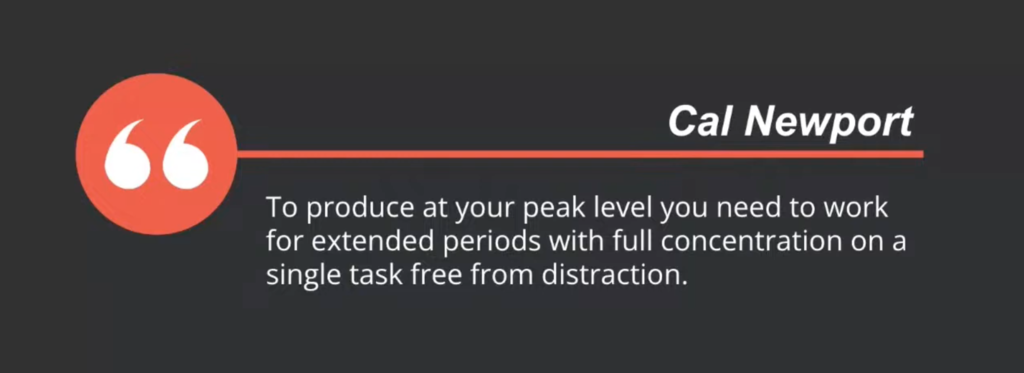
Context and task switching is not making you more efficient. When you're thinking about restructuring your time, restructuring it so that you can have this deep focus on specific tasks is super important.
If you have a really long list of things you need to change, it can feel super overwhelming knowing what to do first, so here’s my advice:
Setting priorities
When restructuring your time, you can start by eliminating unimportant tasks and prioritizing urgent ones. Value versus effort is a powerful yet simple way of prioritizing things because you're able to focus on the low-hanging fruit: things that are high value, low effort can give you some quick wins and free up your time in order to focus on some of the things that are high value, high effort.
Most people are also probably familiar with this quote:
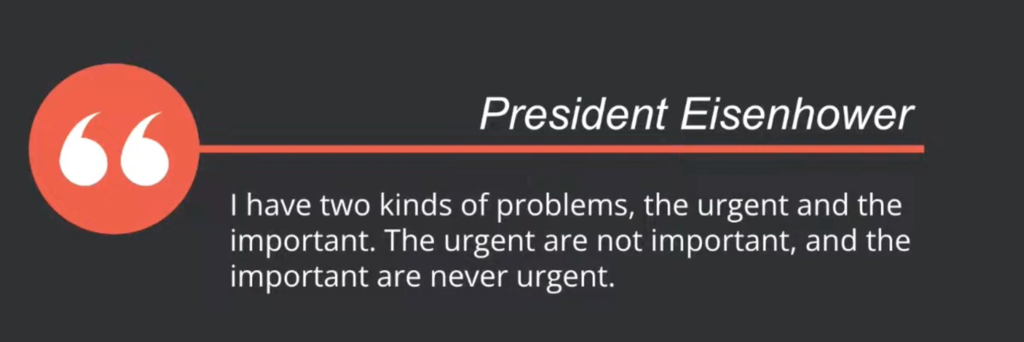
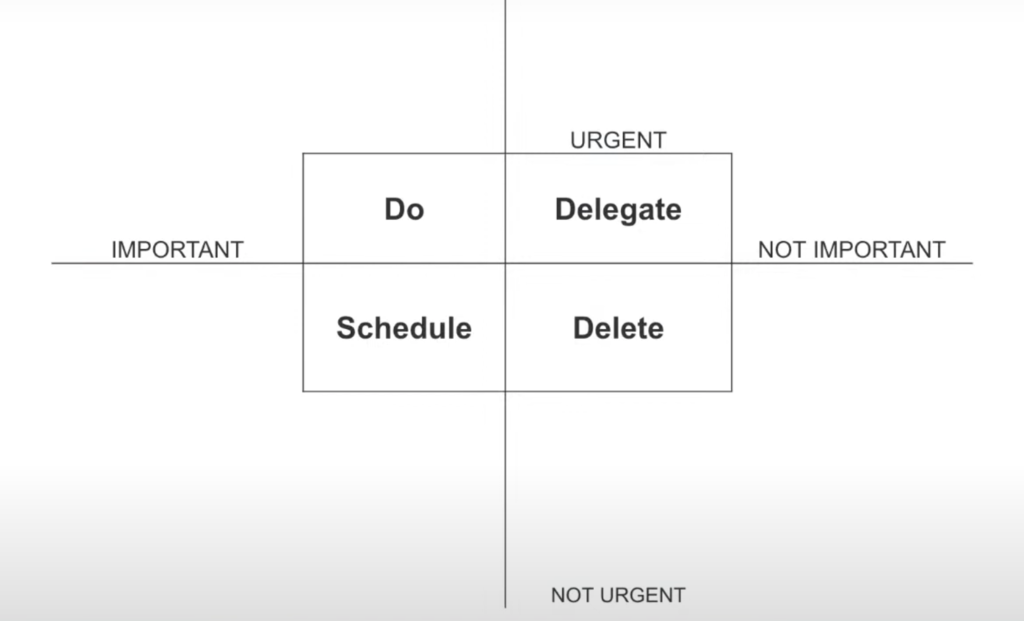
This quite turned into the Eisenhower matrix, which is a way of thinking about how to structure your time. You're categorizing your to-dos based on 4 categories. But there's an inherent problem in this model: if things aren't important, they shouldn't be on your list at all. Our time is extremely limited and the hard truth is that we can't do everything even though we're told that we can.
We've talked about a lot of this stuff already: identifying things you love, things you're good at, things that are not crucial to your business model, and so on. At the end of the day, the only way to make your to-do list manageable is to make it shorter. And then you can use all these strategies to prioritize your time to get everything that's left on your list done.
We have to be able to accept that we cannot do everything. That means that when we focus more on the things that are important and things that we love, we are better able to enjoy them because we are not distracted by all of the other things that we think we should be doing.
This is what that matrix should actually look like.
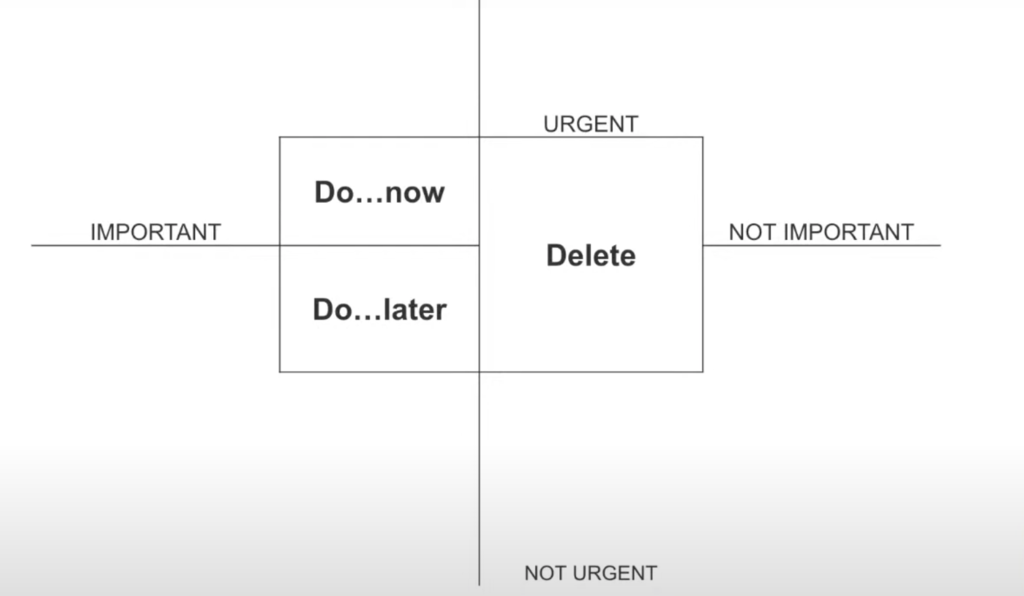
💡Top tip: You're never going to find the perfect way to structure your time for the rest of your career, so give yourself dedicated space to reevaluate these things frequently.
When you're deciding what's important, everything that you do for your clients is important. However, you can probably think of plenty of things that you do for your clients that you don't actually think are important. It’s your responsibility to guide clients through a process of understanding what they really need and making sure that they are paying you to do the things you are best positioned to do.
For everything else, we go back to the criteria that we had in the beginning for our time analysis: revenue, significance, preference, and skill. How you prioritize these is subjective and is going to be unique to you and your business. Deciding what is and is not important is the journey of a lifetime and it's not a one and done. Keep doing it. Be vigilant.
Figuring out what’s urgent
The next thing you need to do is think about what's left on your list, and is it urgent or not urgent? For urgent things, there are deadlines to help you prioritize tasks. Ask yourself what the deadline is, whether it’s a real deadline (meaning, can it be moved?), and who is responsible for meeting the deadline?
For urgent things, you want to put them on your calendar according to the deadline. This sounds obvious, but all of us can get sucked into doing things but according to what is more exciting or what is stressing us out.
Restructuring time
The next thing you need to do is use everything we talked about so far to restructure your time. The best way to do this is with time blocking and rituals. This is where you can structure your day or your week so that you're able to focus on some of the things that maybe you tend to avoid. Where will you be most productive and what is the setup? How do you want to be doing that work?
Rituals
Time rituals are things that you do over and over and over again. For example, when I'm writing, I have to concentrate very hard for a long period of time. It takes me a little while to like get into the zone and a little while to get out of the zone. I do this work better when I am “alone with others” so one of my rituals is to go to a coffee shop, have my headphones in, and listen to instrumental music while I work.
I usually organize my rituals by day, week, month, quarter, and year. There are a few things I do every morning and a few things I do at the end of the day. Same for the week, same for the month, and then quarterly and annually, on a higher level.
No solution is one size fits all
There is no secret formula for all freelancers, but hopefully, I'm giving you some strategies to figure out your personal formula. Let’s take a look at the last two tabs of your workbook where you're bringing all of this together.
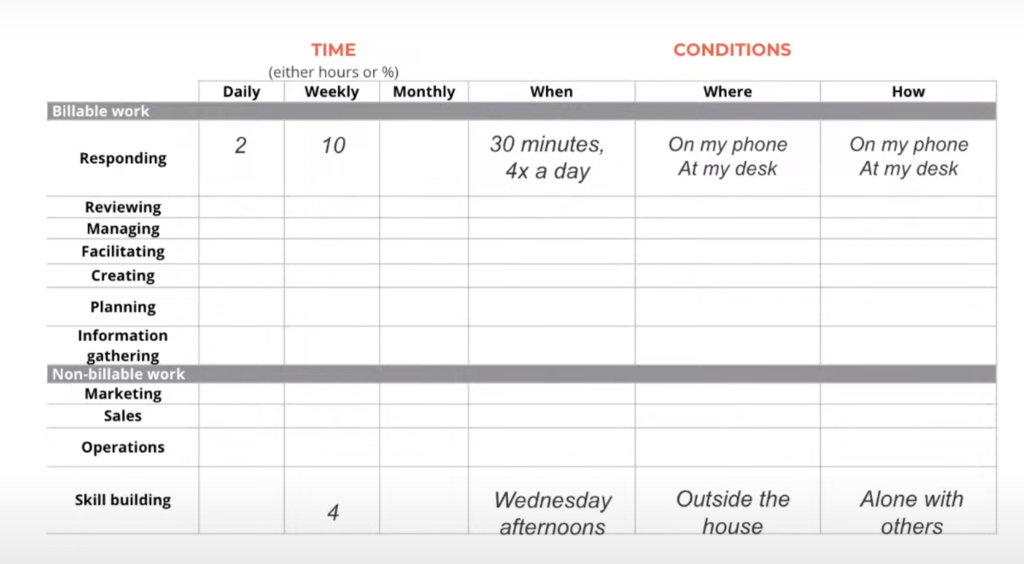
In this sheet, you can map out your ideal month. For example, I will be responding to emails for 30 minutes per day. I'm going to do it on my phone and at my desk. I'm going to be skill building on Wednesday afternoons, in a coffee shop where I'm “alone with others.”
Continuing on, I do calls on Monday and have my monthly planning at the beginning of the month. I don't have meetings on Tuesdays so that I can focus. I do all of my client check in calls on Wednesday, except for this Wednesday when I'm doing my skill building. Thursday I’m doing marketing and sales. On Friday I'm trying to network. And the last Friday of the month I focus on billing and bookkeeping. That's just an example of what it might look like to structure your time.
How do you balance doing the work you have with finding new work?
My client work is all based on networking, referrals, and repeat business. I've done a lot of work to build up my reputation and make sure that I'm super focused on what I do, who I serve, and the problems that I solve for them. I don't do a ton of marketing and the contracts that I get on the project management side are usually pretty long multi-year contracts, so I'm only taking on maybe three to four clients at a time.
On the other side of my business, the work I do with my coaching clients, I find the time to do that because it’s something I love to do.
When we think about finding new work, people often think they have to do it the same way everyone else does it. My advice for finding new clients is figuring out how you can do that while still being true to yourself and not trying to be someone that you're not.
I hope that you find the time to just go through the rest of the process so that you can leverage your time to get exactly what you need out of your business.

FREE RESOURCE
The Full-Time Freelancer's Checklist
Get our guide to financial and logistical planning. Then, claim your independence.
Thank you to everyone who's tuned in live or watching this later.
For more tips on how to create a great freelancer profile, get more freelance clients, and notifications about events like this, follow us on LinkedIn.
Reviewed by Linnea Gradin
The editor-in-chief of the Reedsy Freelancer blog, Linnea is a writer and marketer with a degree from the University of Cambridge. Her focus is to provide aspiring editors and book designers with the resources to further their careers.
As the editor of Reedsy’s freelancer blog and a writer on the Reedsy team, Linnea has her hand in a bit of everything, from writing about writing, publishing, and self-publishing, to curating expert content for freelancing professionals. Working together with some of the top talent in the industry, she organizes insightful webinars, and develops resources to make publishing more accessible to writers and (aspiring) publishing professionals alike. When she’s not reading, she can be found dribbling on the football pitch, dabbling in foreign languages, or exploring the local cuisine of whatever country she happens to be in at the time.


